Our world is becoming increasingly digital—that’s no news to us. But besides using the Internet to communicate with people, listen to music, and shop from home, we’ve witnessed a surge in the number of digital products created and sold online.
The reason? The rise of the creator economy has empowered creators to earn by doing what they love. Digital products require minimal costs and have a huge margin potential. The best part is that you can create them once and sell them over and over again.
Whether you are already selling digital products or you want to embark on that journey, you are probably grappling with the question: How can you boost your digital product sales? We've got you covered!
In this article, we’ll look at 18 off-beat ways to promote your digital products and increase sales. Buckle up!
The State of Digital Product Sales in 2024
If we zoom in on digital product sales, it’s safe to say that this is just the beginning. Data from Deloitte shows that digital goods and services represent an estimated 3% of the US consumer’s wallet, with many signs pointing to growth. The average reported spending on digital goods and services is $120-$130 per month.
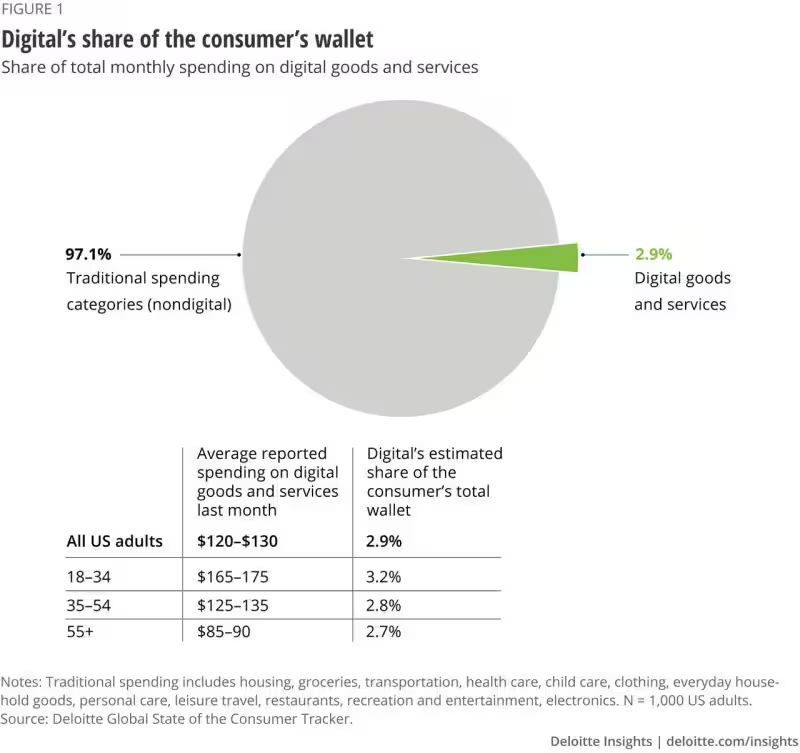
While there’s no doubt that the pandemic fueled the creator economy, it only accelerated the inevitable. The unique nature of digital products makes them a highly sought-after way to earn passive income. Besides the fact that most digital products are relatively easy to create and there are no shipping or inventory costs needed, the biggest upside of digital products is the ability to sell your product worldwide and scale your business quickly.
The world of digital products is so versatile—from newsletters and courses to Discord communities, templates, and ebooks, that creators can build many different types of products.
If we look at the numbers, courses are the most sold digital products by creators. According to Influencers Club, 35,7% of creators sell courses. Looking at other digital products, ebooks come in second place with 7.3%, followed by cookbooks with 3.8%, printables with 3.6%, and templates with 1.3%.
There’s no doubt that digital products will have even greater potential for growth. Data from Statista shows that the online education market is estimated to reach a revenue of US$185.20 billion in 2024, and the ebook market is expected to generate a revenue of US$14.61 billion by 2024.
The main question is: how can you take a bigger piece of the digital products sales pie?
It’s time to find out.
How to Boost Digital Product Sales: Best Practices and Examples
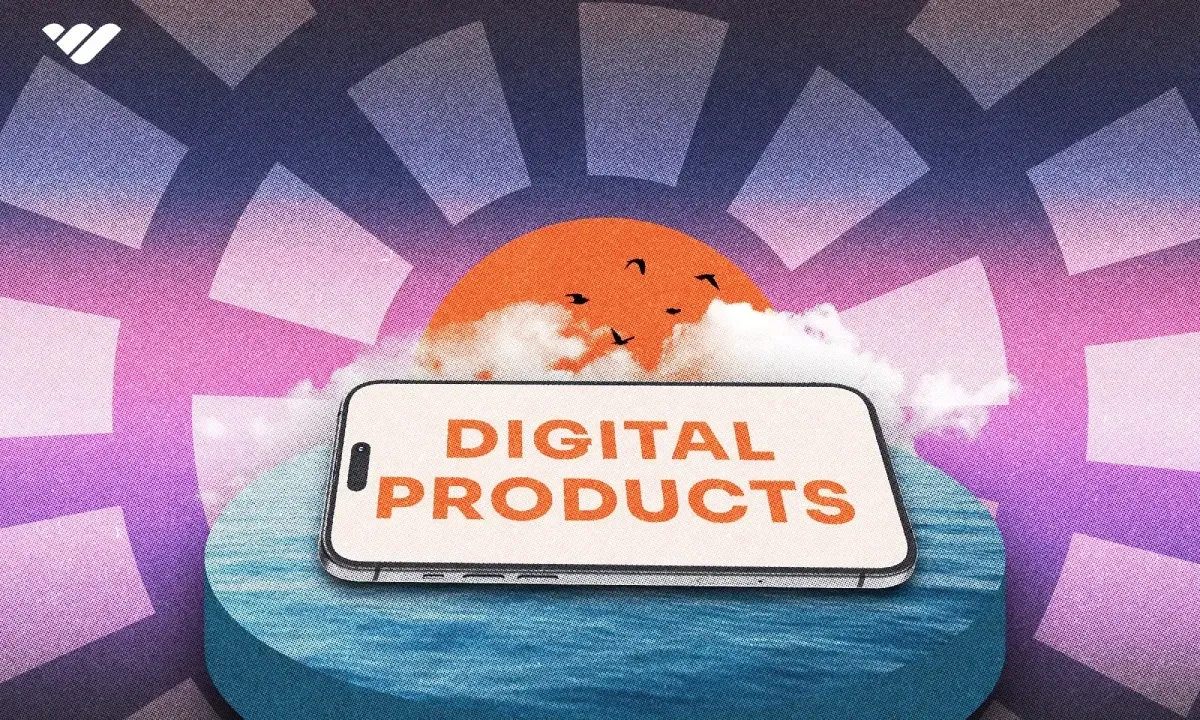
Digital product sales are growing at a pedal-to-the-floor pace, and the competition is fierce. If you are looking for ways to promote your digital products, here are 18 ideas and examples to help you stand out and boost sales.
#1- Create a sense of urgency
The fear of missing out (aka FOMO) is a phenomenon that drives customers to act quickly. If you want to get people to act fast, create a sense of urgency with a time-limited offer. Whether it’s a discount, limited slots, or a special offer that ends soon, reminding your audience that the offer is about to end can urge them to make a decision. Time-limited offers are also a great hook for email subject lines.
Louis Grenier, known for his podcast Everyone Hates Marketers, offers private coaching sessions, and the coaching slots available only on Thursdays are limited. By pointing this out, Louis creates a sense of urgency, encouraging his audience to book a slot as soon as possible.
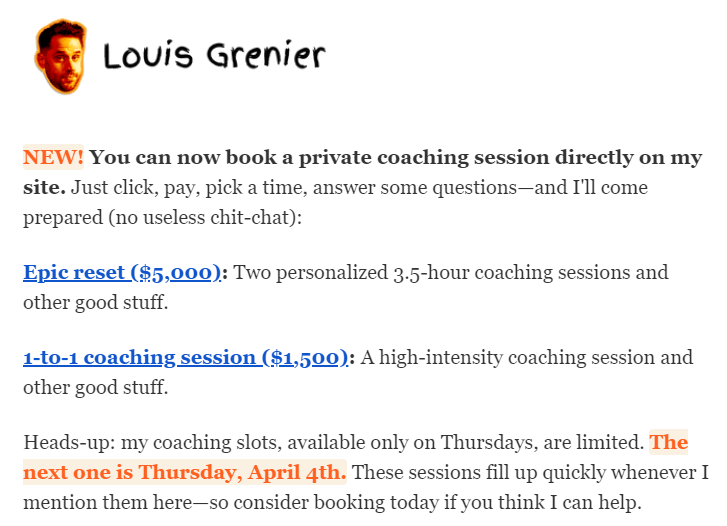
#2- Create a quiz to generate interest
With the cookie apocalypse and the demise of third-party data, customer information becomes a black box. To create an offer that resonates with your audience, you need to get to know them. Here’s where quizzes can help. Creating a quiz is a great way to generate first-party data and keep a pulse on your audience to understand their needs. Based on the quiz results, you’ll be able to build a more personalized offer and boost sales.
The well-known YouTuber Ali Abdaal uses a free quiz to help his readers discover the most effective way to grow their YouTube channel. Besides identifying their growth potential and the best starting point, users who take the quiz get a custom report with action points. This, on the other hand, helps Ali understand his audience's needs and create content that resonates with them.
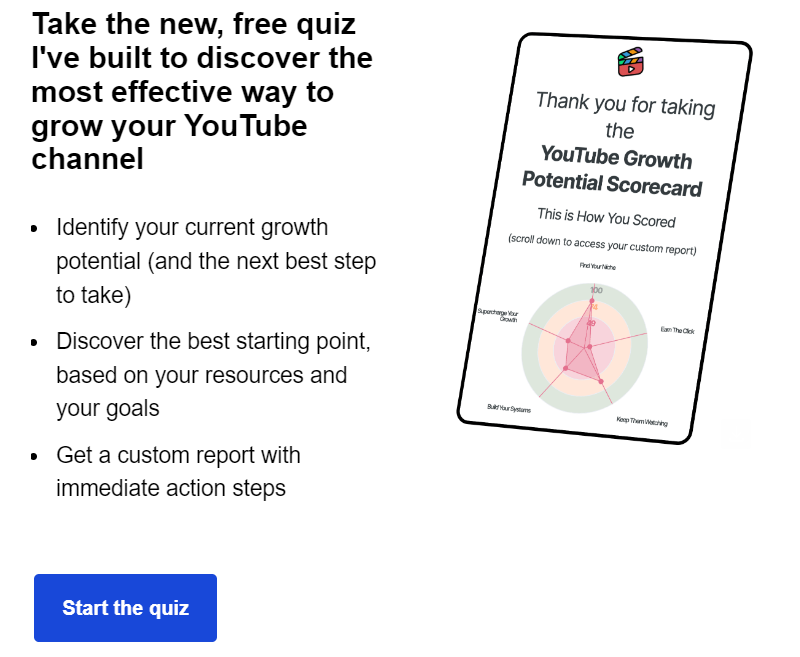
#3- Create a teaser campaign for pre-launch
Curiosity is a fundamental element of human nature. We want to get a sneak peek at the new season of our favorite show or a trailer for the movie coming out soon. The same applies to digital products. People want to know what to expect when they buy something. That’s why creating a teaser campaign for pre-launch can bring great results. Not just in terms of sales, but it will also give you the feedback you need to test different offers and optimize along the way.
Exit Five is a community for B2B marketing professionals founded by Dave Gerhardt. When he decided to transition the community from Facebook to a different platform, he created a teaser video to share an overview of the new experience for existing and new members.
#4- Leverage user-generated content
User-generated content (UGC) is the digital equivalent of word-of-mouth. People always seek reassurance from other customers when buying something, and digital products are no exception. The main reason why UGC performs so well is authenticity. People appreciate genuine feedback and personal experiences as it gives them confirmation that they are making the right decision.
Aware of the power of user-generated content, Kevin Shen showcases other creators’ experiences that testify to the results of the Dream Studio Course. Having some of the most popular creators vouch for the quality of your digital products can be a powerful way to boost sales.

#5- Offer additional value
Don’t you just love it when you get testers or little gifts when you buy something? Well, the same logic applies to digital products. People appreciate when they get an extra generous offer that includes a few bonuses.
This is precisely what The Fix Academy does. Besides all the assets you get for being part of the academy, including access to a Discord channel, face-to-face calls, personal copy reviews, and expert videos, The Fix Academy gives copywriters an exclusive bonus with free access to in-depth talks with experts.
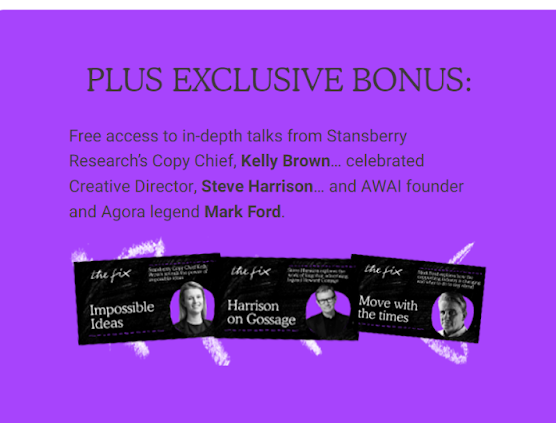
#6- Use affiliate marketing
Affiliate marketing is another popular approach to promote your digital products. Using this model, affiliates are in charge of promoting your digital product in exchange for a commission fee. According to Authority Hacker, education/e-learning is one of the three most profitable affiliate niches. The best part of affiliate marketing is that you can develop a strong affiliate network that does the job for you.
Trident DFS is a premium sports betting community that uses the power of affiliate marketing to boost memberships. Using Whop's promo code feature, Trident ran six separate promo code sales and registered three staff members as affiliates. Each affiliate automatically earns rewards for bringing in new members.
The Whop affiliate program rewards current Whop customers for referring products hosted on Whop and bringing new customers to the marketplace.
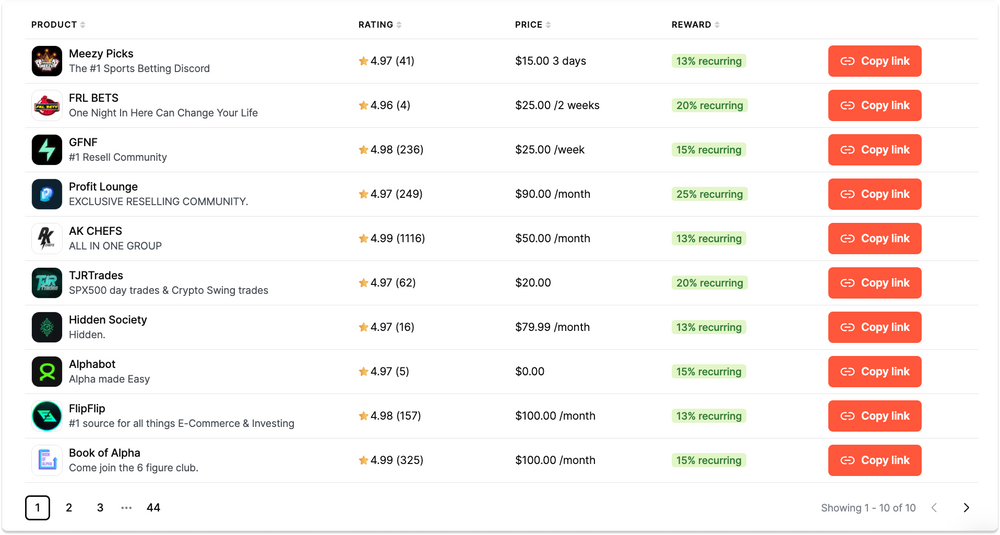
#7- Hold a giveaway
To get more sales, you need more eyeballs. And to get more eyeballs, you need to capture people’s attention. Giveaways can help you on this quest. Whenever you hold a giveaway, make sure you offer something valuable, as it’s the only way to get people to participate.
Charles Miller organized a giveaway for his course to create hype before his BFCM sale. By asking people to like, reply, and retweet, you can fuel the algorithm and boost awareness, which is a prerequisite for more sales.
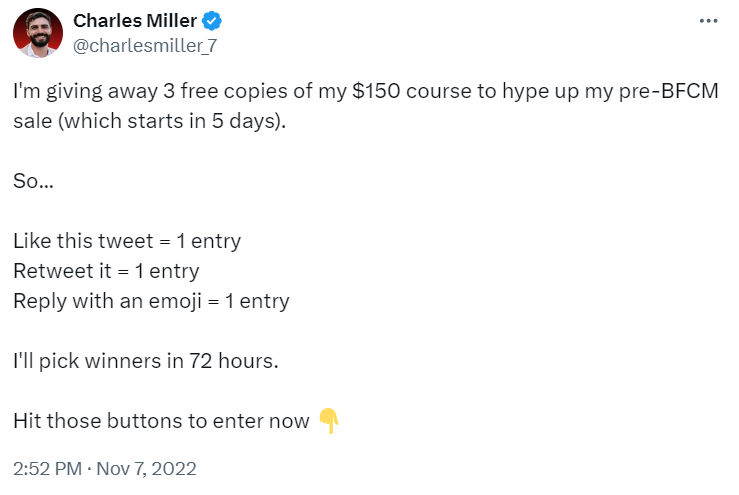
#8- Join an online marketplace
Selling digital products doesn’t need to feel daunting. If you want to remove all the heavy lifting from the process, you can rely on an online marketplace. Joining a specialized marketplace for digital products, such as Whop, can help you get in front of an audience that’s already browsing and looking for digital products to buy. On top of this, you can use platform features such as account management, email and affiliate marketing, and 24/7 support to reach your goals.
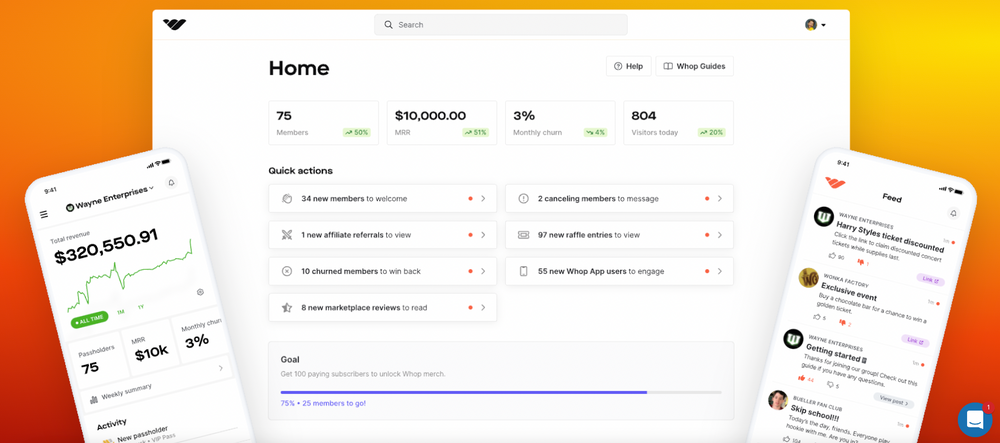
StockDads is a trading community that provides accessible financial education, resources, and support. The shift to Whop enabled them to scale the business, as payments became streamlined and customer support was taken off their plate. To top this off, Whop’s affiliate dashboard empowered StockDads to build an efficient affiliate program that took the business to the next level.
#9- Organize a campaign to generate reviews
When was the last time you watched something or bought something without checking the reviews first? Hard to tell, right? That’s no surprise. Reviews have become a major part of making a purchase decision. That said, getting reviews should not be on auto-pilot. You must be proactive to generate more reviews.
Here’s a great example of how Jay Clouse, the founder of Creator Science, uses his newsletter to ask readers to review his podcast. In return, he offers free access to one of his workshops—a win-win strategy.
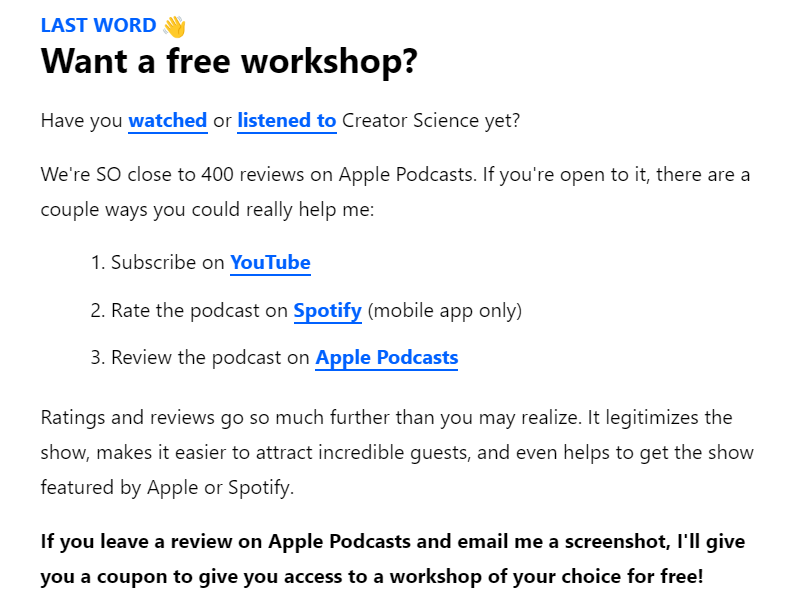
#9- Create a bundle
When it comes to digital products, the number one thing customers look for is value. The higher the perceived value, the more sales you can expect. Here’s where bundling products together can help. Offering a bundle usually means a better price than offering those products individually. Bundles also create a perception of higher value, which motivates customers to buy your products.
Lizzie Peirce is a content creator who offers a budget and estimate bundle that includes two easy-to-use templates and a one-hour comprehensive walk-through of how to use the templates. Packing the offer into a bundle creates a higher value in the eyes of her audience, helping her get more sales.

#11- Offer subscriptions
The subscription model gives businesses reliability and predictability as it relies on recurring revenue instead of one-time purchases. As such, it’s increasingly popular among creators selling digital products. Besides generating recurring revenue, this model also creates a long-term customer relationship based on loyalty and trust.
The market size of the digital subscription economy worldwide is expected to reach 1,500 billion U.S. dollars by 2025. This seems like a good enough reason to consider selling subscriptions online.
Parlay Banditz is one of the biggest sports betting communities on the market. The thriving group started as a 500-person Discord community and now earns more than $1,000,000 yearly. On its road to growth, the group faced a few challenges, one of them being a customer request for Parlay Banditz to have flexible subscription plans.
By setting up a storefront on Whop, Parlay Banditz was listed on the Whop marketplace, and they now have a landing page that displays their community, features, FAQs, and customer reviews. Plus, through Whop, Parlay Banditz can now offer flexible subscription plans to meet the needs of its customer base.
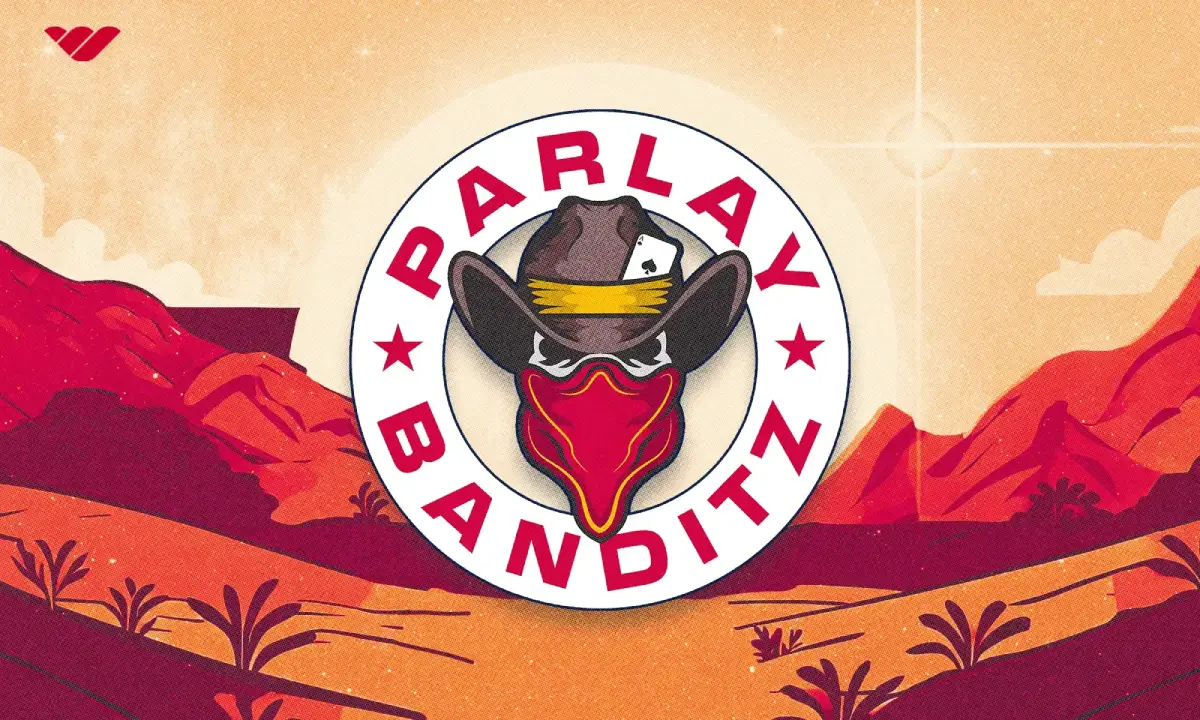
#12- Create a referral program
One of the easiest ways to grow your reach is to ask your audience to share your digital product, whether that’s a newsletter, course, or something else. They are already part of your community and know the value you bring, so asking them to promote and share your digital product in exchange for a discount, freebie, or gift can be a great way to boost your reach.
Morning Brew is a daily newsletter that sends updates on everything that is happening around the world, with one generalized newsletter and multiple niche newsletters (like Tech Brew and Marketing Brew). The brand has more than 4 million subscribers, and one aspect of the newsletter's growth is its referral program. Morning Brew gives merchandise to those who refer their friends, and the more you share, the better the reward!
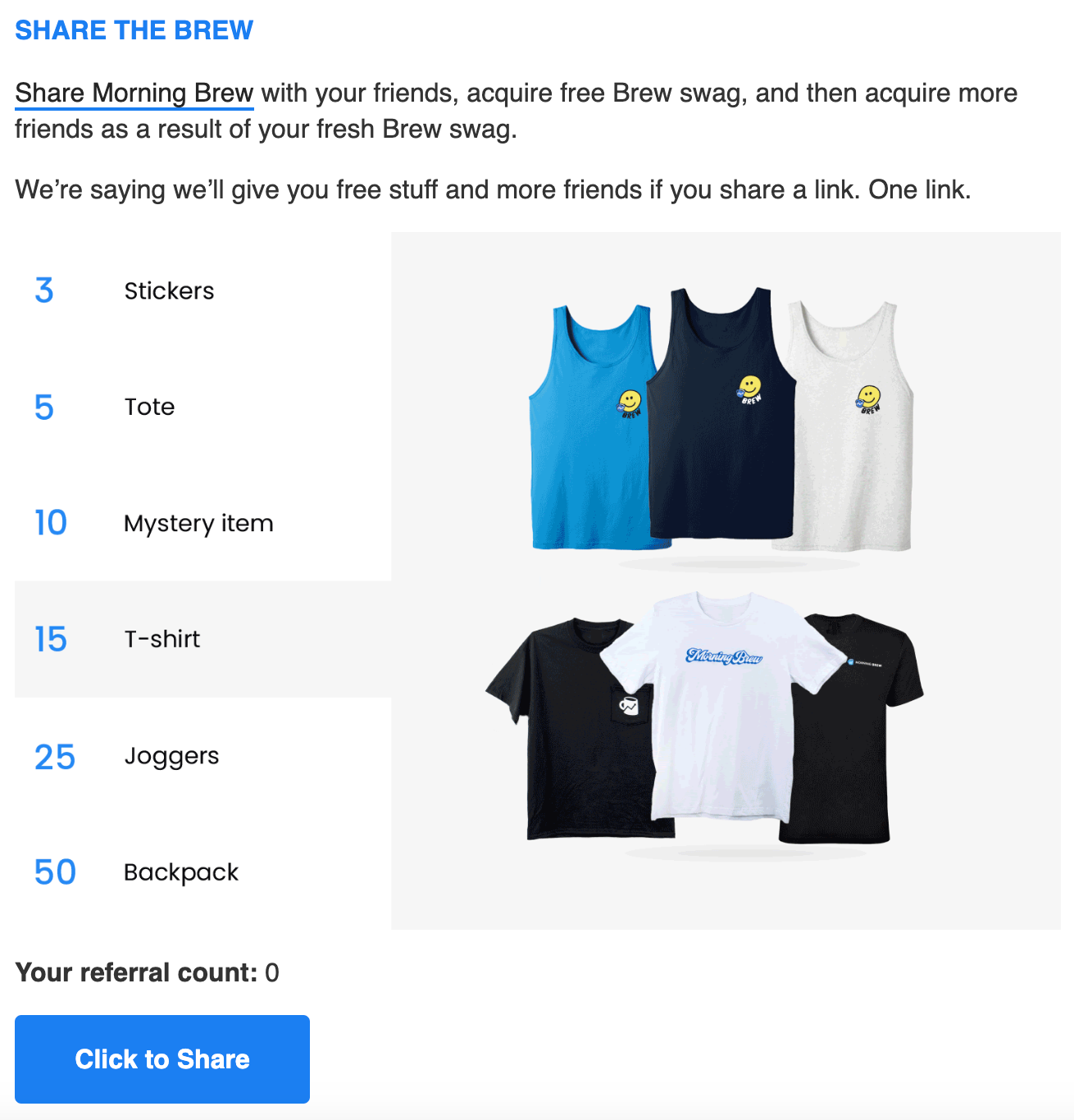
#13- Offer exclusive discounts during special days
Wondering why are businesses offering discounts during special times of the year when everyone else does the same? It’s simple: it’s because it works. People became used to postponing their purchases until special sales days, such as Black Friday and Cyber Monday, to get a better deal. The same applies to digital products.
Superpath, a Slack community for content marketers, created a special Black Friday offer with a 20% discount for Slack membership. These exclusive discounts during special sales days create a sense of a once-a-year opportunity to get access to the digital products customers want to get for a discounted price.
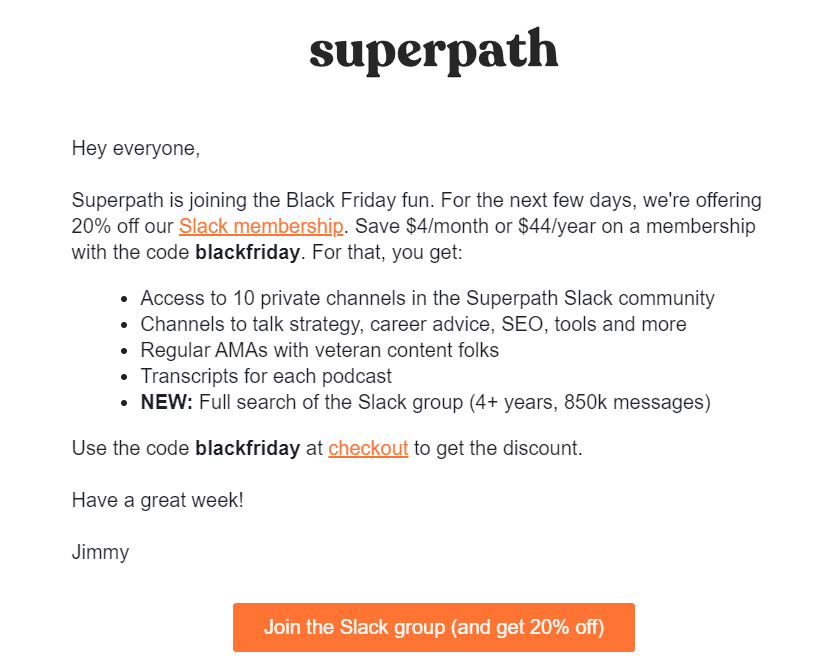
#14- Offer free resources to educate your audience, then upsell
The core of digital products is transferring knowledge and education. As such, getting customers on board requires sharing free resources as well that prove the value you can offer with your paid products.
Thomas Frank is a video creator and writer focusing on productivity, learning, and personal development. Besides the array of paid digital products, he has a massive library of free resources, including YouTube videos, free Notion templates, and courses his audience can use to learn more about productivity and personal development.
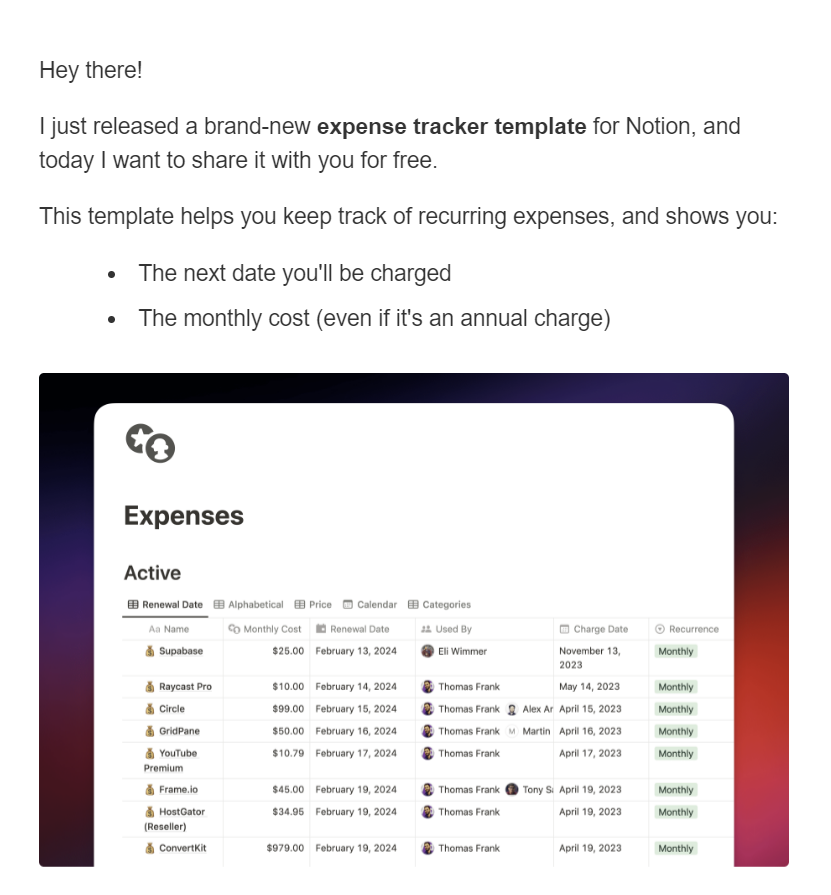
#15- Offer a membership
Another popular way to get more customers to buy your digital products is to offer a membership. Instead of offering education through a course or ebook, with a membership, you create ongoing knowledge sharing by constantly adding value and building a community that becomes a strong reason for people to want to join.
Why Not Stitching Embroidery Academy goes beyond sharing step-by-step video tutorials and offers becoming part of a supportive community, the possibility to get your questions answered, and challenges to make learning even more fun.
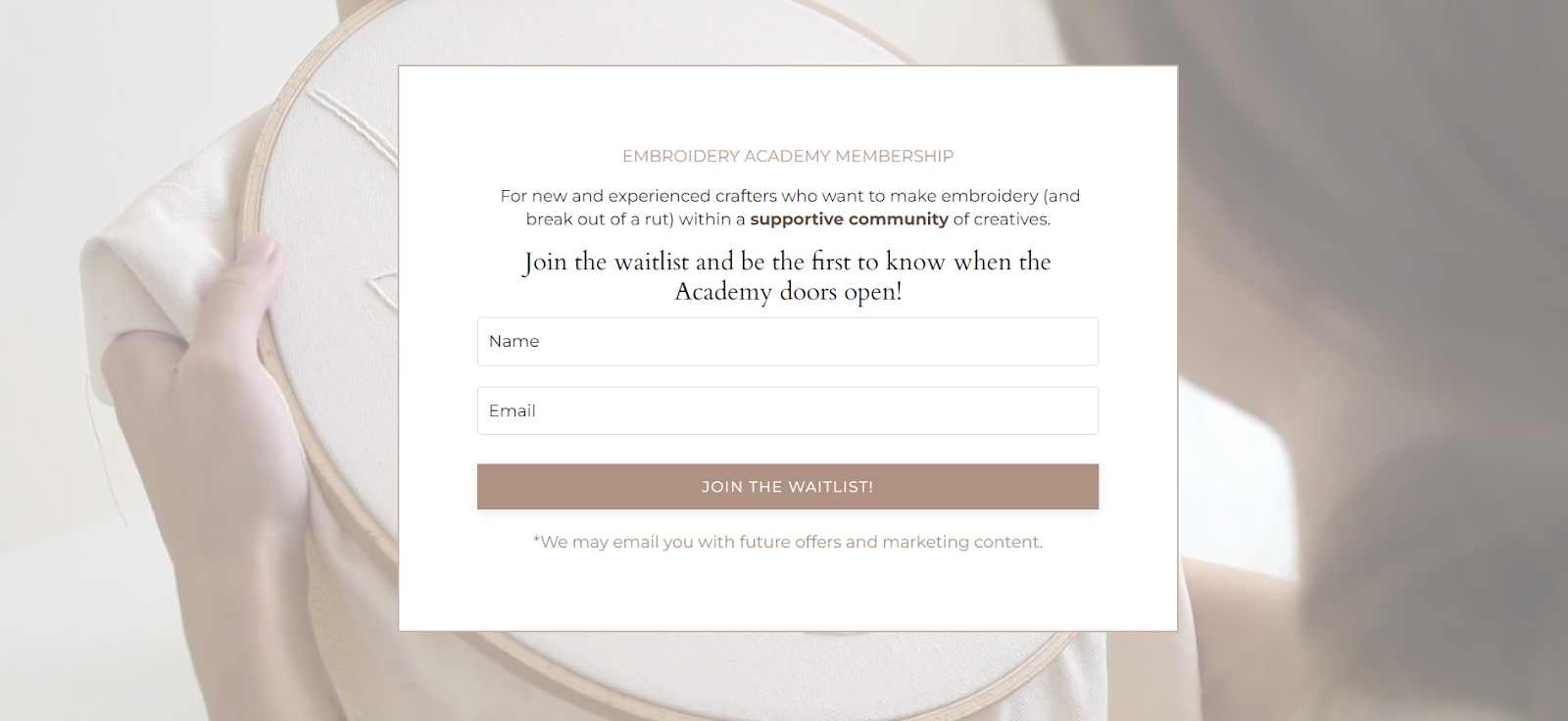
#16- Create an educational email mini-series
Email marketing is still one of the best ways to reach your audience. However, you have to be mindful of the length and frequency of your emails to avoid overwhelming your readers. Here’s where email mini-series come in handy. Instead of putting everything in one email, you can create a short mini-series and share a valuable lesson in each email you send. This approach gives readers digestible lessons and helps creators build excitement for upcoming emails.
Money with Katie is a weekly personal finance newsletter that uses the email mini-series approach to share new lessons with its subscribers, each one building upon the last.
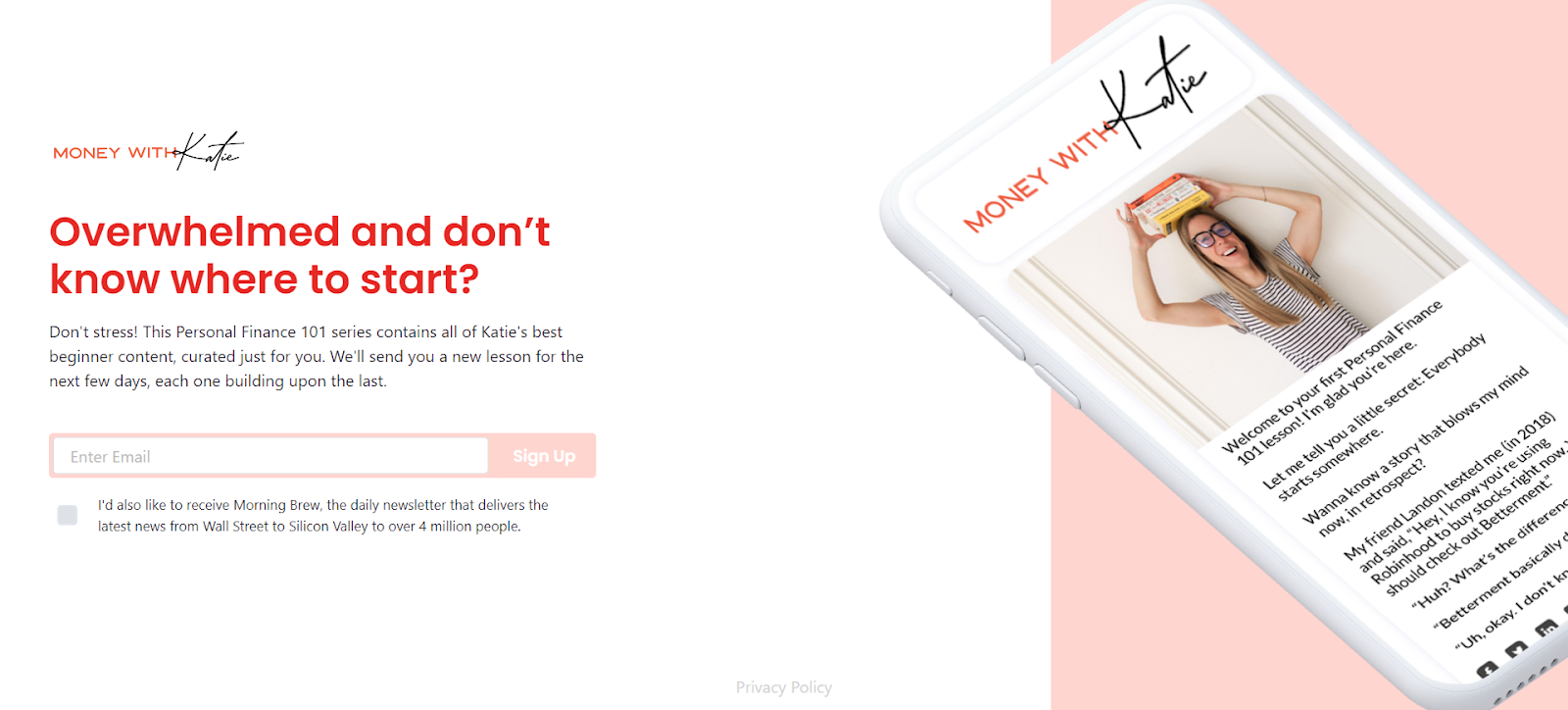
#17- Create a waitlist
Exclusivity breeds desirability. People love to be the first to get access to something, as it makes them feel special. To create a sense of exclusivity, you can build a waitlist that gives your audience a sneak peek of what’s coming. Since people are used to “the early bird gets the worm” psychology, you can offer a few bonuses for those who join the waitlist.
This is a tactic Nathan Baugh used to promote his Storytelling: Zero to One course. Creating a waitlist will also help you assess the interest in your offer and make necessary changes to get more people on board.
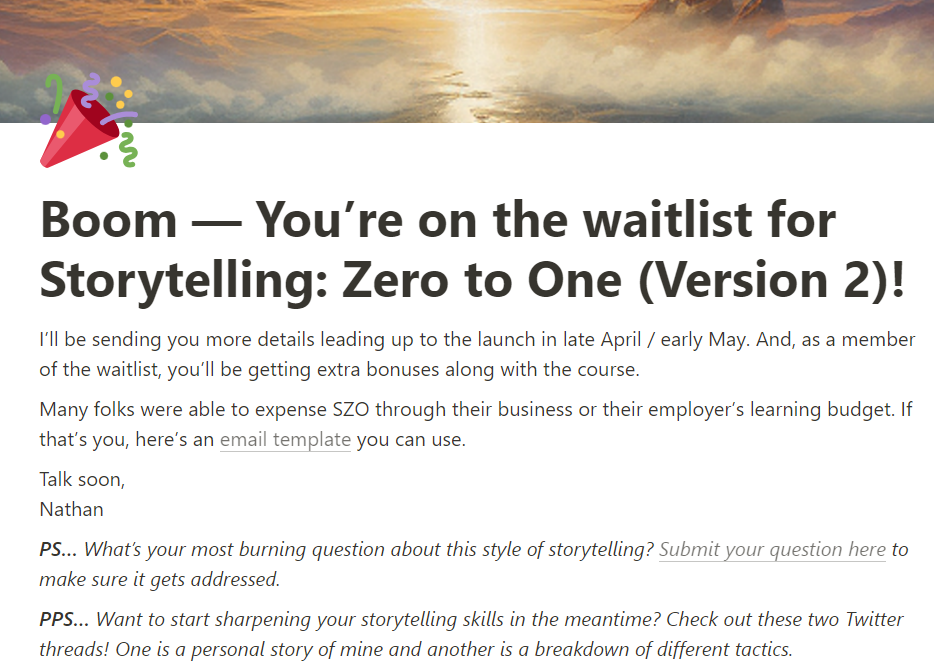
#18- Use social proof to increase credibility
Social proof is a powerful tool that can help increase the credibility and trustworthiness of your digital product in the eyes of potential customers. Showing positive experiences from past customers demonstrates that your business is reliable and trustworthy. This is especially important for memberships and courses that require a bigger investment, as they increase customer confidence and sales by encouraging action.
Kleos Sports Consulting is a sports pick community on Whop, and on Kleos Whop marketplace page you can see 449 reviews. These reviews create trust in the company and the product, with 96% of Kleos' customers giving the business a five-star rating. Sharing customer testimonials is a strong reassurance for every new sports bettor who wants to join the community.
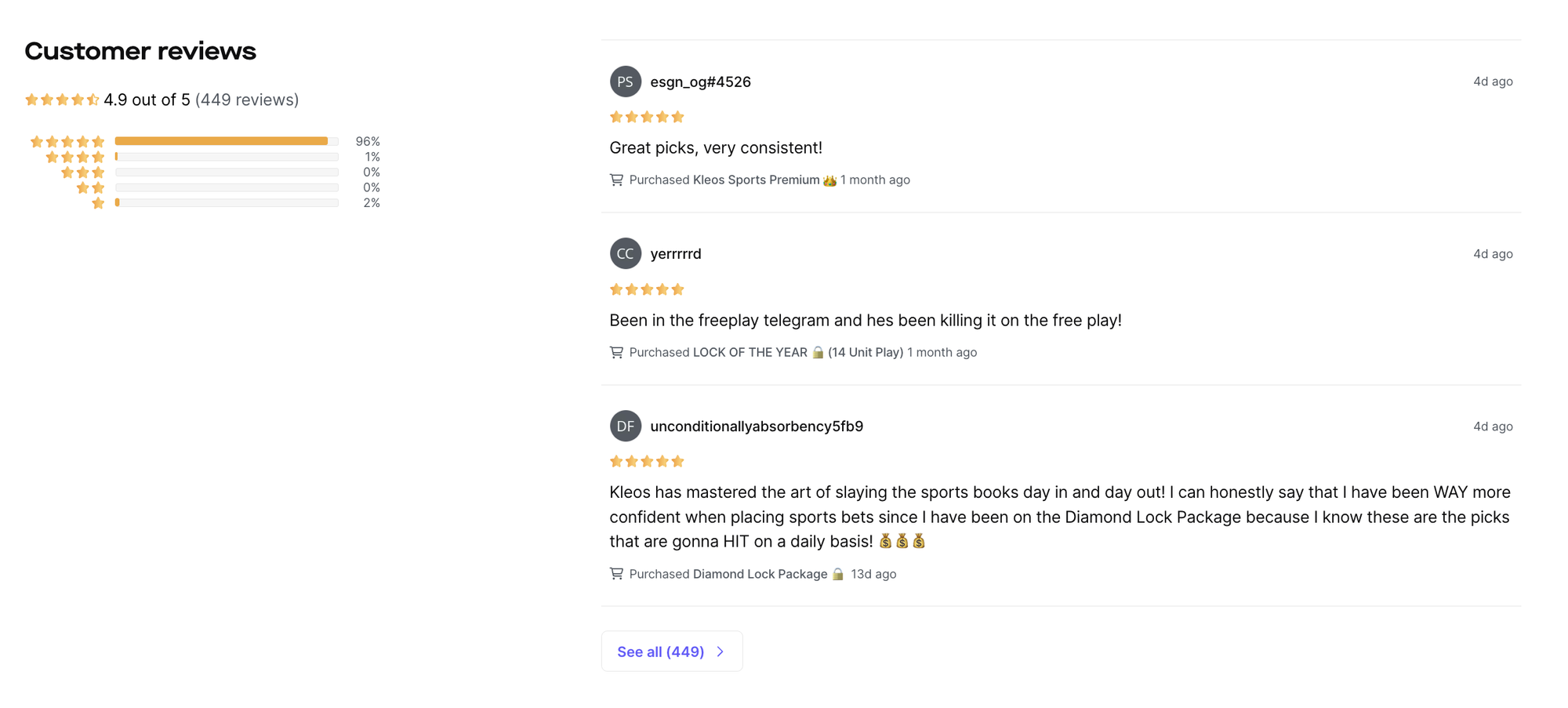
How to Boost Sales With Whop
There you have it—a massive list of 18 ways to boost digital product sales. If you’re still not sure where to start, you can explore the power of Whop to put you on a growth trajectory. Whop is an all-in-one platform that can help you increase your sales. Let’s look at some of the main features:
- Customers hub
Whop offers a different selling experience and product discovery engine, giving your product exposure to a large audience - Global payment structure
With Whop, you can accept payments in national currencies from over 135 countries, as well as cryptocurrency payments via Coinbase Commerce - 24/7 customer service
Reliable help and support 24/7 to help you solve any challenges and get answers to your questions right away - Social proof
Whop has a visible reviews system and Q&A, reassuring customers that what they are buying is legit - Access to seller dashboard
A single place with all the insights you need to run your business, including finances (payments, payouts, and billing history), growth/marketing help (affiliate marketing, promo codes), and a robust resolution center (assisting businesses to keep customers happy) - Product fulfillment
Whop handles digital product fulfillment, so you don't have to worry about sending the downloadable yourself - Portal for managing all purchases and subscriptions
Whop makes it easy for sellers to offer memberships and subscriptions and manage everything from a single portal. - Recommendation algorithm
Customers get a personalized experience based on their activity - Industry-leading fee of 3%
Whop charges a 3% flat fee if you choose to integrate your own payment processor, such as Stripe. When you use Whop Payments to process your card payments, Whop will act as the merchant of record. Whop charges 3% + payment processing fees.
There is so much that you can do with Whop to boost your product sales, from creating a membership, to showcasing reviews, offering free resources, exclusive discounts, affiliate programs, bundles and more - all from within the Whop seller dashboard!
Ready to boost your digital product sales with Whop? Building your store takes less than 10 minutes, so sign up to Whop today.




